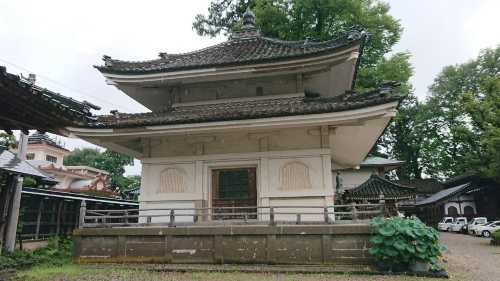Popular Trip Moments
Gokayama (Toyama) – A Quiet Hidden Village with Gassho-Zukuri Houses | "Shirakawa-go is too crowded..." For those of you who feel this way, the hidden gem of a Gassho-style village, Gokayama, is the best | Gokayama Village | Ainokura Village Unesco | Toyama🇯🇵 Gokayama Ainokura Gassho-style Village | [Johana/Inami] (Nanto City, Toyama Prefecture, former province name: Etchu) | [Fukumitsu Village] (Nanto City, Toyama Prefecture, former province name: Etchu) | One of Japan's 🇯🇵World Heritage Sites, Gokayama Gassho Village‼ ️Romantic 💕 Countryside | [Toyama Prefecture] Gokayama | Toyama: Encounter the natural beauty and poetry of Japan's Hokuriku region. | Kurofa-an: A quiet Japanese Zen temple⛩️🍃✨ | Strolling through the Gassho-zukuri in Suganuma | Amazing village... Ainokura | Cherry Blossoms of Gokayama | Must see! 😱❣️ | Emotional Gassho-style Building | Simple old town _ Gokayama "Ainokura Gassho Village" | Kanjōji Park | The Gassho-zukuri village of Ainokura | [Toyama] Hidden hot spring ♨️ Omaki Onsen ♨️ | Echizen Gokayama [Ainokura Gassho Style Village] | Shirakawa-go, Japan in summer | We went to Gokayama, a place of breathtaking views! | Peaceful little town | [Toyama] Beautiful Japanese scenery in each season | Japanese real life folk village | Aikura Gassho-zukuri Village | Camping in Style in the Mountains of Japan 🎌
Recommended Attractions at Popular Destinations
Bangkok attraction near me | Manila attraction near me | Tokyo attraction near me | Taipei attraction near me | Hong Kong attraction near me | Seoul attraction near me | Kuala Lumpur attraction near me | Los Angeles attraction near me | Shanghai attraction near me | New York attraction near me | Shenzhen attraction near me | Osaka attraction near me | Singapore attraction near me | London attraction near me | Guangzhou attraction near me | San Francisco attraction near me | Beijing attraction near me | Macau attraction near me | Bali attraction near me | Jakarta attraction near me | Paris attraction near me | Ho Chi Minh City attraction near me | Istanbul attraction near me | Phuket attraction near me | Chicago attraction near me | Seattle attraction near me | Toronto attraction near me | Orlando attraction near me | Cebu attraction near me | Chiang Mai attraction near me
Popular Restaurants in Nanto
L’evo | Sappororamen Marimo | Matsuya | Jippensha | Men's Kurabu Zero-1 | Enjo | Itamae Tavern Manpuku | Fukumitsu-Ya Shokudo | Hokawa | Studio Wood | Hoen | Gokayama seasonal vegetable workshop Iwana | Ramen Makotobuto | Arai | Hachiban Ramen - Fukumitsu | Gorobei | Handmade Soba Kayasho | Gokayama Sodachi | Kiku | Ryu | Kan'Nin-Ya | Izakaya Don | Nanakoshi Ramen Inami | Kushijo | Yottekare Johana | Wood Dream | Hanagozen | Yakimochi Basan No Yoshidaya | Hyotan | Seiryu
Popular Ranked Lists
Popular Best Things to Do in Dongtai | Top 10 Local Restaurants in Copenhagen | Top 10 Local Restaurants in Tel Aviv | Top 10 Local Restaurants in Johor Bahru | Popular Luxury Hotels Near Goslar | Top 3 Best Things to Do in Tonghua | Top 17 Local Restaurants in Yokohama | Popular Premium Hotels in Sestroretsk | Top 10 Local Restaurants in Kathmandu | Popular Premium Hotels Near Gorod Novosibirsk | Popular Premium Hotels in Bijainagar | Popular Luxury Hotels Near En Gev | Popular Premium Hotels in Fahaheel | Top 19 Local Restaurants in Chicago | Popular Luxury Hotels Near Phuc Yen | Popular Best Things to Do in Jishou | Top 10 Best Things to Do in Rongcheng | Popular Premium Hotels in Grad Korcula | Top 15 Local Restaurants in Helsinki | Popular Premium Hotels in Phuc Yen | Top 10 Local Restaurants in Dublin | Top 10 Local Restaurants in San Diego | Popular Luxury Hotels Near Sandakan | Top 8 Local Restaurants in Saipan | Top 9 Best Things to Do in Liangshan Prefecture | Popular Premium Hotels in Mobile County | Top 15 Local Restaurants in Narita | Popular Luxury Hotels Near Odiaxere | Popular Luxury Hotels Near Sandakan Division | Top 3 Best Things to Do in Linxia Prefecture
Payment Methods
Our Partners
Copyright © 2025 Trip.com Travel Singapore Pte. Ltd. All rights reserved
Site Operator: Trip.com Travel Singapore Pte. Ltd.
Site Operator: Trip.com Travel Singapore Pte. Ltd.






















